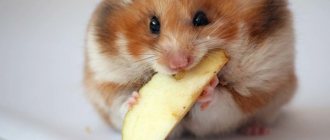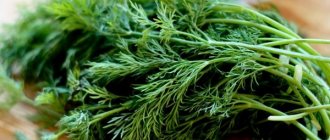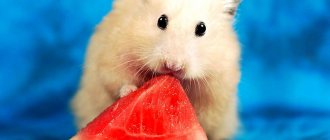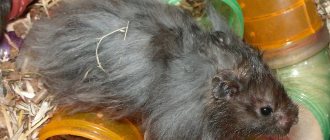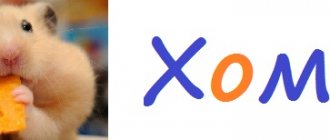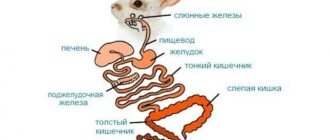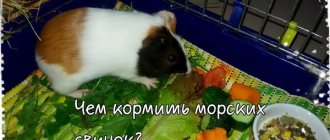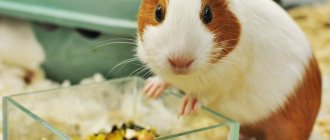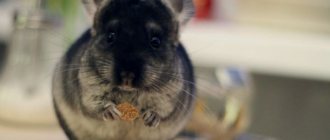Nuts can be dangerous for hamsters
Nuts contain vegetable protein, a whole list of vitamins, minerals, and healthy oils.
Many plant fruits have a pleasant, sweetish taste, which is liked not only by people, but also by some animals. Hamsters are big fans of nuts. They are ready to eat them all day long, but you cannot often feed your furry pets nuts. And some fruits can even lead to death in rodents.
The benefits and harms of nuts in the diet
The hamster's menu is quite varied - it is full of healthy vegetables, fruits, grains, as well as special green food. But with the use of nuts in the diet, not everything is so simple. On the one hand, they contain an incredible amount of vitamins, minerals and fatty acids. In addition, in the natural habitat of rodents there are many different nuts, so they eat them with pleasure.
For a hamster, nuts are a very nutritious food. A small piece is enough for him to satisfy his hunger and even feel full.
If we talk about the composition of nuts in more detail, they contain:
- protein;
- starch;
- saponins;
- flavonoids;
- tryptophan;
- gluten and pantothenic acids;
- calcium;
- phosphorus;
- magnesium;
- zinc, selenium and other trace elements;
- vitamins B1, B2, E, D.
Hamsters need nuts as solid food to wear down their teeth. And this in turn reduces salivation. Thanks to their beneficial properties, they improve the functioning of the gastrointestinal tract and cardiac muscle of the rodent, promote the rapid growth of cubs in pregnant females and prolong the life of pets.
But before feeding your pet nuts, it is important to find out the rules. Firstly, not all of them are beneficial to the health of the rodent. At best, they will simply be useless. Secondly, the health and even life of a hamster directly depends on eating certain types of nuts.
Almond
A forbidden treat for hamsters is almonds. This nut contains hydrocyanic acid, which is poisonous to rodents. Plum, apricot, and peach pits are no less dangerous. They are capable of killing a pet.
Whatever nut is offered to the hamster, it must be shelled. It is difficult for a furry pet to clean the fruit on its own. Even if he succeeds, the shell can damage the rodent's oral mucosa.
If you follow the above recommendations, sometimes treating your hamster to nuts that are healthy for him, he will delight his owners with his activity and cheerful disposition.
Is it okay to give hamsters peanuts?
Peanuts contain vitamins B, C, PP, minerals and polyphenyls, which are antioxidants and are necessary for hamsters.
Peanuts strengthen the heart and blood vessels of hamsters. This is a good treat for your pet. Large species of hamsters, such as Syrians, should be given no more than 2 grains per day, small ones no more than 1, and no more than 2 times a week.
It must be remembered that only fresh nuts are healthy. It is unacceptable to offer store-bought nuts that have been heat-treated with the addition of seasonings.
Roasting peanuts with salt or sugar causes liver, pancreas and kidney diseases. As a result of metabolic disorders when eating heavy food, the hamster may die.
It will be good if you treat hamsters occasionally, 2 times a month, with pistachios, sunflower and pumpkin seeds, and sesame seeds.
It should be remembered that special food mixtures for feeding rodents contain the necessary components, so nuts and other baits must be given very carefully.
It is worth consulting with a breeder or veterinarian who will give recommendations, taking into account the characteristics of the breed, health status, weight and age of the pet.
What can you feed a rodent at home?
Food is dry and rough
Due to the sensitive digestion of chinchillas, they should not be given the following foods:
- food from the common table (salty, spicy, fatty, hot, smoked);
- meat and meat products;
- bakery products and baked goods (bread, pastries);
- flour (pasta, noodles);
- potatoes, fresh white cabbage, lettuce;
- sweets (cookies, chocolate, sugar, sweets, other confectionery);
- eggs;
- roasted nuts, seeds, grains;
- mushrooms;
- fermented milk products;
- fast food, chips, popcorn;
- stale and spoiled products.
The list does not contain absolutely any useful substances for the proper growth and development of the rodent. The listed foods are high in calories and fat, which can result in your pet becoming obese.
Even if your pet likes junk food, this does not mean that it should be offered.
Perhaps the animal will not die from just eating it, but systematically eating such delicacies will lead to serious health problems for the chinchilla.
We suggest you read: Cat tick bite first aid and treatment
Results
To summarize and answer the questions regarding, can hamsters eat nuts and what kind? The answer will be - it’s possible, but within the permissible norm, literally a couple of nuts a day. Various types of nuts are possible - peanuts, hazelnuts, cashews, walnuts and pine. The main thing is to know that proper nutrition will ensure a long and healthy life for your pet.
Did you like the article? Share with friends: [supsystic-social-sharing id=”1"]
- Related Posts
- Can hamsters have watermelon?
- What do Djungarian hamsters eat?
- Can hamsters eat pomegranate?
« Previous entry
Hazelnut
The cultivated hazelnut and its wild counterpart do not lag behind other nuts in nutritional value, and even surpass some in calorie content.
The nut kernels contain a lot of protein, oil, ascorbic acid and tocopherol, thiamine and riboflavin. Hazelnuts contain biotin, also called vitamin B7, which is necessary for the breakdown of carbohydrates and glucose. Also, interacting with other vitamins of its group, it prevents the development of anemia and promotes the utilization of fats and fatty acids. Leads in manganese content. The combination of calcium and zinc guarantees the strength of bone tissue, magnesium and potassium have a beneficial effect on the cardiovascular and nervous system. Iron, thiamine and riboflavin are hematopoietic factors; amino acids are extremely important for a growing organism. These nuts are not prohibited for diabetics. Hazelnuts contain almost no carbohydrates, so you can eat them without fear of gaining weight. In addition, it helps remove toxins and waste from the body.
Can a nursing mother eat hazelnuts? If your mother is not allergic to this type of nut, then you can and should
But with caution, as with all new foods. It should be introduced into the mother’s diet little by little, while monitoring the child’s condition.
Even if mother and child tolerate hazelnuts well, you should not get carried away with this delicacy - the daily intake of nuts should not exceed 30-50g; overeating can cause cerebral vasospasm.
What varieties can be given to hamsters
You can treat your kids to walnuts, hazelnuts, cashews, peanuts, and sesame seeds. There is controversy surrounding the consumption of almonds, so it is best to avoid this product.
Can hamsters have walnuts?
Nuts are rich in minerals, vitamins, protein, help improve intestinal motility, and have a positive effect on the functioning of the heart muscle. Very useful for the growth and development of babies. The product is indispensable for pregnant females.
The product contains many useful elements:
- potassium;
- proteins;
- l-arginine;
- calcium;
- phosphorus;
- proteins.
You should limit your consumption of walnuts because they contribute to weight gain. This is especially true for small breeds. It is recommended to give half a nut every few days.
Can a hamster eat hazelnuts?
Nuts contain vegetable proteins, so the product is indispensable for rodents. Hazelnuts have a unique chemical composition, which includes:
- fats (79%);
- proteins (22%);
- carbohydrates (4%);
- vitamins B1, B2, C;
- carotene;
- cellulose;
- flavonoids;
- amino acids;
- iron;
- potassium;
- magnesium.
Hazelnuts, like walnuts, promote rapid weight gain, so you should treat your hamster with half a nut no more than 1-2 times every 7 days. Small breeds are recommended to be given a quarter.
Peanuts have a lot of healthy protein
Can hamsters eat peanuts?
Consumption of groundnuts in limited quantities is beneficial for the rodent. The fruits contain many nutrients:
- easily digestible proteins (35%);
- fatty oils (more than 50%);
- starch;
- sugar;
- saponins;
- vitamins B, E, D;
- pantothenic acid;
- biotin;
- glutenins.
Nutrients improve the functioning of the cardiovascular system, are excellent antioxidants, and prevent the risk of developing cancer, which is important for rodents.
Hamsters should only be given unprocessed and unfried foods. Sweet, salty, glazed nuts, peanut butter, and pasta are prohibited.
Peanuts are a treat for hamsters. The optimal dosage is half a nut once a week.
Can a hamster eat pine nuts?
Nuts are a source of vegetable protein that is completely digestible. They are very useful due to the content of vitamins and microelements:
- potassium;
- magnesium;
- copper;
- phosphorus;
- amino acids;
- tryptophan.
You should be careful with pine nuts. Despite the fact that hamsters love such delicacies, overeating can lead to problems with the intestines and liver. Large breeds can have 3-4 peeled nuts, kids – 2 pieces every few days.
Cashews have a lot of vitamins
Can hamsters eat cashews?
Brazil nuts are one of the most high-calorie nuts, so you should treat your pet with them in doses. 100 g of product contains 600 kcal. It is rich in unsaturated fatty acids, vitamins B, E, K, PP.
Minerals contained in cashews:
- potassium;
- magnesium;
- zinc;
- selenium;
- copper;
- iron;
- phosphorus.
Nuts contain vitamin E, which has a beneficial effect on the quality of your pet's coat. Its deficiency leads to skin diseases. Nuts have anti-inflammatory, antibacterial, and tonic effects. It is recommended to give your pet half a cashew 2 times a week.
Do you give your hamster cashews?
Can a hamster have pistachios?
There is no consensus on whether these nuts can be given. Some zoologists consider such a treat inappropriate and unsafe. Before introducing pistachios into your diet, it is better to consult a veterinarian. In any case, the nuts must be unshelled and unsalted.
Can hamsters have almonds?
Almonds are dangerous for hamsters and other rodents. It contains hydrocyanic acid, which is poisonous. The nut belongs to the plum genus and is a stone fruit. It is in the bones that the strongest concentration of poisons is found. Toxicology scientist Daunderer found that eating more than 10 seeds poses a mortal danger to a child. The most dangerous are bitter almonds. Sweet fruits are allowed to be eaten fresh.
Bitter almonds are not used in the food industry, so it is impossible to buy them at random. Even if we assume that the bitter fruit accidentally fell into the paws of a rodent, it simply will not eat it.
Sweet almonds in small quantities are good for the circulatory system and reduce cholesterol levels. Nuts are a high fat product. It can be given in very small quantities and only as a treat.
Different breeds need different amounts of nuts
Possible problems when feeding nuts
Salted nuts are a dangerous product: they lead to kidney diseases. Some owners do not peel the nuts, which is absolutely forbidden to do. Shell fragments can damage the digestive organs, which will lead to serious troubles.
The seed husk gets into the cheek pouches and clogs them.
In this case, the hamster's cheek swells and discharge appears from the eye. An ambulance from a veterinarian will be required.
Hamsters have a sensitive digestive system, so their diet must be treated carefully. You should not abuse heavy and fatty foods, such as nuts.
Choosing dry food
The diet of jungarians consists of 80-90% dry food. The hamster should receive it every day, this is the basis of the diet. Djungarian hamsters eat little (about a tablespoon of food per day), which means you shouldn’t skimp on store-bought formulas. Let's consider several brands of proven products:
Food for dwarfs
Versele-Laga "Prestige Mini Hamster Nature"
The completely balanced composition, in addition to grains and seeds, contains dried vegetables, fruits and nuts, a protein component and yeast as a source of vitamins. If your pet is prone to obesity, you need to manually select pineapple and raisins.
Chika-Bio "Food for Djungarian hamsters"
Domestic food, not inferior in quality to imported analogues, but more affordable. The size of the food particles and the ratio of ingredients are selected specifically for feeding jungarians.
Food for hamsters of any type of excellent quality
JR Farm Hamster
It has high palatability: dungarians feed by eating the entire food, rather than choosing individual tasty components. The “chips” of the food are a variety of protein sources (mealworms, chicken, tiny fish), the prebiotic inulin, which improves digestion, and yucca extract, which reduces rodent odor.
Vitakraft Menu Vital
Usually used for Syrians. The downside is that honey is added to the mixture to improve the taste. The diet of Djungarian hamsters involves limiting sugars.
Fiory Criceti
For dzhungariks, this food does not contain enough protein, and you will have to manually select appetizing, but harmful honey granules.
Cunipic
This food is characterized by a relatively poor composition.
Vitapol and Lolo pets
It is better to store hamster food not in a bag, but pour it into a glass jar with a tight lid. The mixtures are complete: you can give your Djungarian hamster only dry food for a long time. The reason to diversify the diet is the special physiological status of the animal: growth period, pregnancy and lactation, mating time for the male.
On our website you can learn about the correct feeding regime for a hamster. These are important rules that can protect your pet from obesity and poisoning.
Source
What other nuts can you give to a rodent?
Rodents enjoy eating solid food, including nuts. They help grind teeth, which prevents increased salivation.
What nuts can hamsters eat:
- Hazelnuts are rich in protein. But due to its high fat content, it should not be given more than once a week. Large animals can be given half of the fruit, and small animals a quarter.
- Peanuts are useful for animals in small quantities and in their natural form. You should not give salty, sweet, or spicy foods.
- Cashews are rich in vitamin E. They have tonic and antibacterial properties. Prevents hair loss. It is recommended to give your pet half a fruit once a day.
- Pine nuts are a favorite delicacy of the Syrians. The recommended norm is four grains per week. Djungarians should not consume more than two grains.
Offer your pet pistachios no more than twice a month. If your animal eats them with pleasure, consult a specialist about including pistachios in the diet.
Precautionary measures
Adding a new product to the diet of dzhungarika requires some precautions:
- When offering your pet nuts, consider its age, breed and size. The smaller the animal, the smaller the portion should be.
- Do not serve peanuts in the shell. Putting food in the cheek pouches can cause injury to your hamster. Peanut shells can cut your baby's esophagus and stomach.
- Do not overfeed your pet. Peanuts and hazelnuts have a high fat content, which disrupts the functioning of the animal’s digestive system. By overfeeding your animal with high-calorie foods, you harm its health.
- The animal must eat natural products. Peanuts should not be given after heat treatment.
- The rodent's diet should be varied. Offer him a different product each time.
- Do not give sweet, salty or spicy foods. Salted peanuts are harmful to the kidneys and liver.
Nuts are a tasty and nutritious treat. They have properties that are beneficial to the health of the hamster. However, it should be remembered that not all fruits can be included in your pet’s diet. Follow the feeding rules, and your pet will be healthy, cheerful and active.
What else can Djungarian hamsters eat?
- Fruits (not exotic, but “local”) - eat no more than a couple of times a week, preferably 1.
- If your dry food does not contain greens, you can add them to the diet (dried).
- Non-starchy vegetables (cabbage, cucumber, bell pepper) - can be eaten almost every day, alternating.
- Low-starch vegetables (zucchini, carrots, pumpkin) - it is enough to feed them to the dwarf 2 times a week.
- Protein – 1-2 times a week.
- Nuts, seeds - try to give them less often, as a treat (high fat content of the product).
What fruits and berries can hamsters eat?
Fruits for the Djungarian hamster should not be too sweet (remember about diabetes!). It is for this reason that you should not feed the dzhungarik exotic foods at all. Occasionally, you can give a dried banana, but not more than once a week (formally, a banana is a berry, but that’s what we’re used to).
Be sure to remove large seeds and pits from the fruit. Many of them can be poisonous to the dwarf. The possibility that such a baby will simply choke on the seeds cannot be ruled out either.
Follow the same recommendations when choosing berries.
A few words about dried fruits. These are the same fruits, only the water has been removed from them. The composition remains virtually unchanged; we feed according to the same principles as fresh fruit.
What vegetables can dzungaria eat?
Vegetables have the same problem - they increase the risk of diabetes. Here we are no longer talking about sweets (fructose), but about starch, which “works” in the same way as fructose or sugar - it increases the level of glucose in the blood.
Therefore, try to feed your hamster vegetables that are low in starch and high in fiber (cabbage is an ideal example).
What do hamsters prefer from greens?
For greens, let's eat your usual salad, parsley and dill (1-2 times a week). From “improvised” (more precisely, pasture) plants, you can feed plantains and dandelions. Greens are a storehouse of vitamins, microelements and nutrients for the Djungarian rodent, do not neglect them.
Avoid greens that have a strong smell or taste. Those. any plants that have an imbalance in composition (too many essential oils or acids). That is why it is strictly forbidden to feed the Djungarian hamster with onion sprouts, garlic and sorrel.
Nuts for different breeds
Next, let's look at which nuts can be given to Djungarian hamsters and which to Syrian ones?
- Djungarian hamsters. These kids happily eat all types of nuts: walnuts, hazelnuts, peanuts, cashews. However, they are given to dwarf rodents in limited quantities and no more than once every 2 weeks. Djungarians suffer from obesity and diabetes more often than other breeds, so you should not overfeed them with fatty foods.
- Due to their larger size, Syrian breeds are allowed to treat twice a week.
Can hamsters eat pomegranate?
Walnuts are not only a delicacy
Nuts are used not only as a treat. Often, in order to tame a hamster, owners hand-feed the rodent. To do this, just take a nut and let your pet eat it from the palm of your hand.
Gradually the hamster will get used to the owner and will be easily handled. Be extremely careful, if you do not pick up the animal correctly, it may bite you.
It is possible that the first time the hamster will not come into your hands and will not want to take the nut. Then just leave the nut in the cage, let the rodent eat it, and you try this procedure next time. Over time, the hamster will understand that you do not wish him harm, will get used to you and will sit calmly in your arms.
The same goes for new toys, swings and accessories for your hamster. Just put a nut there and the rodent will climb into the new toy and try it out.
But don’t forget about moderation; 1-2 nuts a day are enough so as not to overfeed or harm your little pet.
Pistachios: for heart health and vegetarian nutrition
100 calories - 30 nuts
Well balanced in vitamins and minerals, relatively little fat, a lot of protein and plenty of opportunities to use them in a wide variety of dishes, from soups and salads to desserts and baked goods. Pistachios can be especially recommended for vegetarians. And for hearts: as a product rich in potassium and phytosterols. “An antagonist of sodium, potassium prevents the accumulation of excess fluid in the body, the appearance of edema, and the development of hypertension,” says Elena Tikhomirova. - Both it and phytosterols are beneficial for blood vessels. And the latter also reduce the level of bad cholesterol in the blood.”
Note. Pistachios are often sold salted, and this is not our choice
Eating 1/2 to 1 cup of these nuts will provide you with at least twice your daily salt requirement, according to the USDA National Nutrient Database. That is, sodium, a potassium antagonist. And thereby neutralize the beneficial effect of the latter.
Cashews: against gray hair and osteoporosis
100 calories - 11 nuts
You can recommend these cute “bagels” to your grandmother or mother. “Firstly, cashews contain a lot of copper (100 g will more than cover the daily requirement), a deficiency of which causes hair to turn grey,” says Elena Tikhomirova. – Secondly, they are rich in magnesium, which, along with calcium and phosphorus, is responsible for bone density and strength and protects older women from osteoporosis. Finally, these nuts are a good source of tryptophan, an amino acid that our bodies convert into the happy hormone serotonin. It will protect against mood swings characteristic of PMS and menopause.”
Please note: All nuts are considered allergenic, but cashews and walnuts are the most likely to cause reactions.
Water
When keeping in a city apartment, special attention must be paid to this point. Due to the requirements for water disinfection, liquid straight from the tap is of little use for chinchillas.
Especially in those regions where water is still disinfected with chlorine. Before giving such water to animals, it must be settled to get rid of chlorine compounds. And then boil, removing excess salt.
If you don’t want to take risks, you can buy bottled drinking water in a regular store. Now there is an opinion that such water is even worse than tap water, but there is no chlorine or bacteria in the bottles. In the case of chinchillas, this is the main thing.
To prevent chinchillas from polluting the water, it is better to use nipple drinkers. Such drinking bowls are closed on almost all sides, and in order to drink from it, you need to move the locking ball.
Beneficial properties of cashew nuts
Cashew nuts are often used in Asian cuisine, but for us they are still a “little developed” product, although lovers of a healthy lifestyle have already appreciated their qualities. These nuts, like others, are rich in fatty acids and contain large amounts of magnesium and other micro- and macroelements. The benefits of cashews include their reduced calorie content (compared to other nuts): 554 kcal per 100 g of product. There is also evidence that cashews are less likely to cause allergies.
The beneficial properties of cashews are primarily due to the presence of a large amount of essential fatty acids: the ability to reduce cholesterol levels, maintain vascular tone and elasticity, and have a positive effect on the condition of the heart and brain activity. In addition, cashews contain a set of valuable microelements, the main of which are magnesium and phosphorus.
There are opinions that eating cashews reduces the risk of cholelithiasis, heart attacks, migraines, and in women it helps cope with painful menstruation and improve the condition of the skin and hair. However, since this product appeared in Russia relatively recently, the local practice of using it in folk medicine and home cosmetology has not yet been developed. In the countries where the nut grows (India, Africa, South and Central America), it is used as an aphrodisiac, as a remedy for skin diseases, to treat pulmonary and colds, hypertension, stomach and intestinal diseases, etc. It is clear that there is no scientific evidence of the effectiveness of these methods.
By the way, cashews are not recommended to be consumed in large quantities: this can lead to diarrhea, vomiting and other digestive problems. There is reason to believe that cashew nuts are not beneficial for kidney stones and other diseases of the excretory system. It is also not advisable to give these nuts to children under 3 years of age.
Between the shell and shell of a freshly harvested cashew nut there is a layer of a resin-like substance that can cause severe skin reactions and even poisoning. Therefore, after harvesting, the nuts must be cleaned and heat treated to remove residual resin from the surface of the kernels. Then they are most often fried. On sale you can find cashew nuts that are positioned as “raw” - these nuts have also been peeled and steamed, but not then fried. Truly raw cashews are not available for sale.
Pecan nut: beneficial properties


